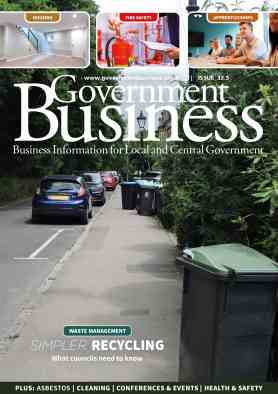
New fire safety regulations are coming in
New fire safety regulations come into force on 1st October within section 156 of the Building Safety Act 2022, but what does it mean for those responsible for public buildings?
Section 156 introduces changes to the Regulatory Reform (Fire Safety) Order 2005 (FSO) intended to improve fire safety in all buildings regulated by the FSO. The improvements form Phase 3 of the Home Office’s fire safety reform programme, building on Phase 1 (the Fire Safety Act 2021) and Phase 2 (the Fire Safety (England) Regulations 2022).
Phase 3 aims to improve cooperation and coordination between Responsible Persons (RP); increase requirements in relation to the recording and sharing of fire safety information and create a continual record for a building’s lifespan; make it easier for enforcement authorities to take action against non-compliance; and ensure residents have access to comprehensive information about fire safety in their building.
For a building with two or more sets of domestic premises, The Fire Safety Act 2021 applies to the structure (including balconies), external walls, and any common parts and all doors between the domestic premises and common parts.
From January 2023, The Fire Safety (England) Regulations 2022 introduced Phase Two in England. This introduced new requirements for displaying and issuing fire safety and fire door instructions to new occupiers and all occupiers every 12 months.
The changes introduced by Section 156 will apply from 1 October 2023 and apply to England and Wales.
Previously, a Responsible Oerson had to conduct a fire risk assessment where common areas existed and this needed to be in writing if the responsible person employed five or more persons. However, this has now been changed to remove the requirement of having five or more persons. Therefore, all responsible persons must now have a written record of a fire risk assessment.
Article 9A is a new addition to the RRFSO and covers who the responsible person may appoint to help with the risk assessment. The responsible person is only able to appoint someone to assist with conducting the risk assessment if that person is “competent”. In this context, a person is considered competent if they have appropriate training, experience and knowledge. The new legislation also means that if more than one person assists with the risk assessment, there must be good cooperation between them.
The responsible person must also produce and implement appropriate arrangements for the effective planning, organisation, control, monitoring, and review of preventive and protective measures. These must be appropriate for the size and number of properties and their use. These must also be recorded.
Article 21A is also new and refers to providing information to residents on domestic premises and is applicable for buildings with two or more sets of domestic premises. With the new regulation, the RP must provide residents with clear and relevant information about fire safety. This includes the risks identified by the risk assessment and the preventive and protective measures in place, as well as the name of the responsible person and a UK address where they, or their representative, can accept notices and documents. Other information to be provided includes the identity of any person appointed to assist with the risk assessment, the identity of any competent persons nominated by the responsible person, any risks informed to the responsible person, and any other matters specified in regulations made by the relevant authority.
Under the previous regulations, all responsible persons had to work together to ensure compliance with the rules and each responsible person was obliged to coordinate their compliance measures with those of the other responsible persons. It was also required that a responsible person should inform other responsible persons about any risks that might arise from any activities.
This is extended in the new regulations so that a responsible person must now take reasonable steps to determine if any other persons share or have duties regarding the premises. The responsible person must also provide their name and a UK address to the other responsible persons identified, for the receipt of notices and other documents. The responsible person must also make the other responsible person(s) aware of the specific part of the premises for which they consider themselves accountable and keep a record of this.
There is also new legislation on what happens when a person is no longer responsible for a premises and the responsibility is then passed on the someone else. The previous responsible person must provide the new responsible person with all relevant fire safety information that they have in their possession. This includes records of assessments and reviews, the identity of any person appointed to assist with these assessments, the name and UK address of any other responsible person, and the identity of any accountable person if the premises are a higher-risk building.
For higher risk buildings – those at least 18 meters in height, those with at least seven storeys or those which contain at least two residential units – there are further regulations. For these buildings, the responsible person must take all reasonably practicable actions to establish if there are any other accountable persons for the premises, who may have specific duties and responsibilities for the safety of the building.
In conclusion, these changes will have an impact on those responsible for residential buildings and that applies to local authorities and housing associations. It is important to get on top of the legislation before it comes into force in order to protect residents and ensure you are not the recipient of any punitive measures for not complying. Ultimately the new legislation is there to save lives and ensure accountability for fire safety measures.
www.gov.uk/government/news/new-fire-safety-regulations-come-into-force-in-england


